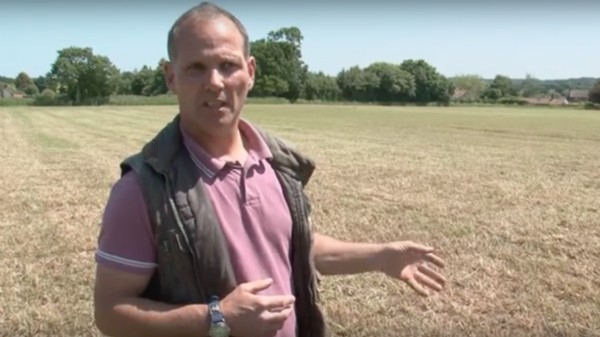

Thornage Hall is a unique type of farm with a particular function. It is run by the Camphill Community Charity as a centre that offers meaningful work to vulnerable adults. The hall itself, together with seventy acres of land, were donated by Lord Hastings 26 years ago. Though a relatively small acreage, it has significant demands placed upon it. The farm supplies grass fed meat and vegetables to feed the people who live and work there, as well as providing surplus produce for sale at local markets.
With a herd of suckler cows, there is a need for continuous grazing and silage.
‘We were short of late summer grazing so we wanted a broad leaf sward which the cattle could graze on from August until late October,’ Farm Manager Phillip Culley explains.
Another important consideration is the nature of the soil, as ever. Nutrients are easily lost from the light sandy loam of Norfolk, where lack of water can also pose a problem.
Philip was advised that if he split a fifteen acre field and mixed up what was growing on the two sides, it could accommodate both silage and grazing, the idea being that while the crop was wearing out on one side of the fence, it would be establishing nicely on the other. And by choosing the right leys for undersowing, he could boost fertility and drought resistance.
Once the field had been divided, one half was sown with whole crop silage, including triticale and vetch. This was undersown with Cotswold Seed’s long term Lamins drought resistant ley.
‘We made good use of the bespoke mixtures offered by Cotswold Seeds and omitted chicory from our ley,’ says Philip. ‘Because I rely on contractors to manage the silage, we can’t always guarantee when they can come to us to cut, bale and wrap, and the chicory can become woody and not so palatable for cattle if it is not cut early enough. Strong stalks also pierce wrapping, so we took the chicory out and increased the white clover instead.’
The first silage cut was taken in the third week of May and produced a good yield of six tons per acre. A second cut could have been taken in early August but instead, as the silage wasn’t required, it was topped to return the nutrients to the field.
Meanwhile, on the other side of the field, the remaining area was again sown with whole crop silage of oats and vetch, this time undersown with a Pochon white clover ley.
‘A long term red clover ley had been grown in this field but after five years of cutting for silage the soil was tired and needed rejuvenating,’ Philip explains. ‘We therefore drilled a five year Pochon mix under the whole crop silage. The first cut was taken in June by which time the mix was growing so vigorously it was ideal for strip grazing.
‘Self-sufficiency is part of our ethos,’ Philip says. ‘And undersowing with drought resistant leys has become a crucial part of our farming system.’
Date Posted: 29th March 2017



